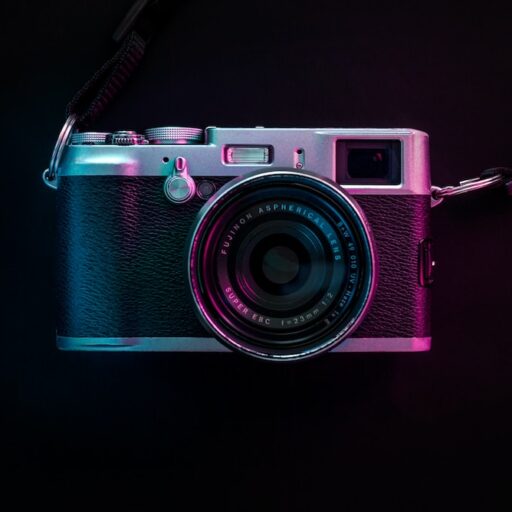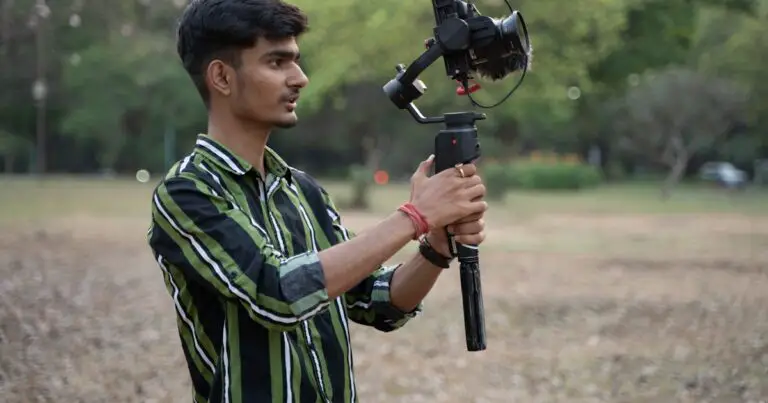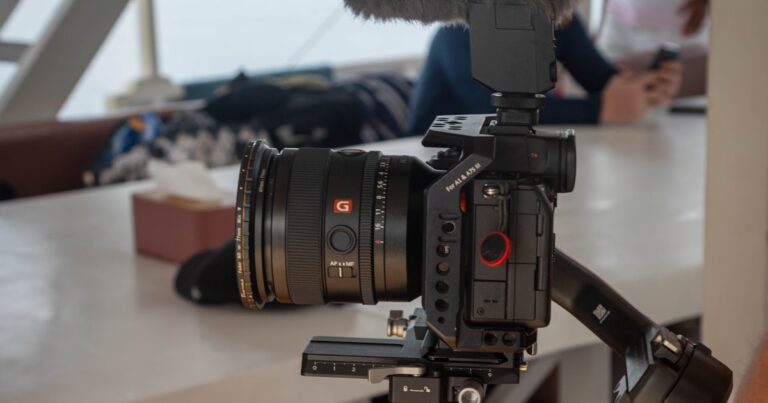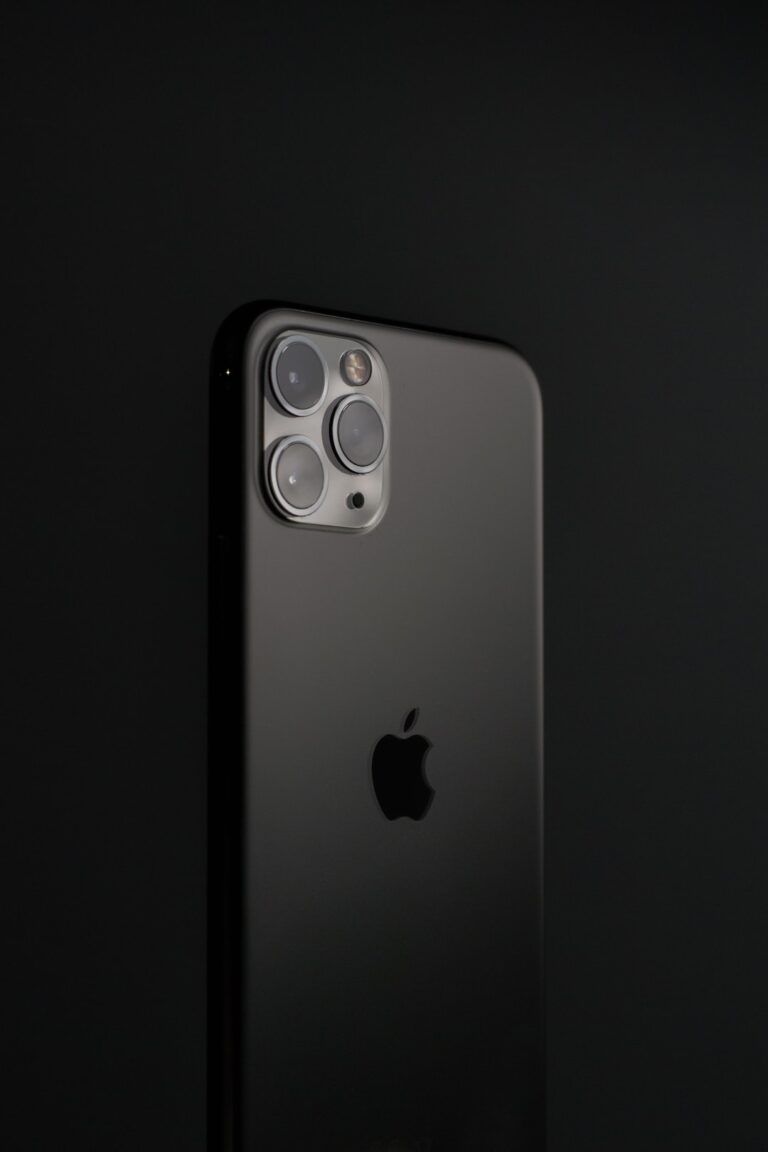Support our educational content for free when you purchase through links on our site. Learn more
📸 The 7 Best Professional Camera Brands to Know in 2025
Choosing the right professional camera brand can feel like navigating a jungle of specs, features, and fanboy debates. We get it—after all, your camera is your creative partner, your livelihood, and sometimes your best friend on those long shoots. Did you know that over 70% of professional photographers now prefer mirrorless systems, yet many still swear by the tactile feel of DSLRs? Intrigued? Stick around because we’re breaking down the 7 top camera brands that dominate the professional scene in 2025, revealing their secret weapons and who they’re truly made for.
Whether you’re chasing wildlife at dawn, capturing fleeting wedding moments, or crafting cinematic masterpieces, this guide will help you cut through the noise. We’ll dive into autofocus wizardry, lens ecosystems, build quality, and even the quirks that make each brand unique. Spoiler alert: the “best” brand isn’t one-size-fits-all, but by the end, you’ll know exactly which system fits your style like a glove.
Key Takeaways
- Canon leads in autofocus and ergonomic design, perfect for fast-paced shooting like weddings and sports.
- Nikon excels with legendary lenses and rugged build quality, ideal for landscapes and studio work.
- Sony dominates innovation and speed, boasting the largest lens ecosystem and blazing burst rates.
- Fujifilm offers unmatched color science and a tactile shooting experience, beloved by enthusiasts and pros alike.
- Panasonic is the hybrid video powerhouse, loaded with pro video features and in-camera LUTs.
- Leica stands for timeless craftsmanship and unique image character, a luxury investment for purists.
- OM SYSTEM (Olympus) and others fill niche roles, especially for travel, wildlife, and compact systems.
Ready to find your perfect match? Explore detailed reviews, expert insights, and shopping links for all these brands in our full guide.
👉 Shop Professional Camera Brands:
- Canon Cameras & Lenses | Canon Official
- Nikon Cameras & Lenses | Nikon Official
- Sony Cameras & Lenses | Sony Official
- Fujifilm Cameras & Lenses | Fujifilm Official
- Panasonic Cameras & Lenses | Panasonic Official
- Leica Cameras | Leica Official
Table of Contents
- ⚡️ Quick Tips and Facts About Professional Camera Brands
- 📸 The Evolution of Professional Camera Brands: A Historical Perspective
- 1. Canon: Mastering Autofocus and Ergonomics for Pros
- 2. Nikon: Leading the Pack in Lenses and Low-Light Autofocus
- 3. Sony: Pioneering Innovation and Lightning-Fast Speed
- 4. Fujifilm: Delivering Stunning Colors and Timeless Aesthetics
- 5. Panasonic: The Ultimate Photo-Video Hybrid with In-Camera LUTs
- 6. Leica: Crafting Legendary Build Quality and Unique Character
- 7. Olympus and Other Noteworthy Contenders: Niche Strengths and Innovations
- How We Put Professional Camera Brands to the Test: Our Expert Methodology
- Why Our Camera Brand Recommendations Are Trusted by Pros Worldwide
- Choosing the Right Professional Camera Brand for Your Photography Style
- Understanding Sensor Types, Megapixels, and Image Quality Across Brands
- Lens Ecosystem and Compatibility: What to Know Before You Buy
- Customer Support, Firmware Updates, and Brand Reliability
- Tips for Maximizing Your Investment in a Professional Camera Brand
- Conclusion: Which Professional Camera Brand Reigns Supreme for You?
- Recommended Links for Deep Dives and Latest Camera Reviews
- FAQ: Your Burning Questions About Professional Camera Brands Answered
- Reference Links and Sources for Further Reading
Here at Camera Brands™, we live and breathe photography. We’ve spent countless hours in the field, in the studio, and—let’s be honest—geeking out over spec sheets to bring you the real scoop. Deciding on a professional camera system is like getting married; it’s a long-term commitment that’s deeply personal and will shape your future. So, let’s dive into the big question: what camera brand do professionals use?
⚡️ Quick Tips and Facts About Professional Camera Brands
- It’s Not Just the Camera, It’s the System: When you choose a brand, you’re buying into an entire ecosystem of lenses, accessories, and support. Think of it as choosing a family.
- Mirrorless is the New King: While DSLRs like the legendary Nikon D850 are still workhorses, the industry has overwhelmingly shifted to mirrorless technology for its speed, video capabilities, and advanced autofocus.
- Megapixels Aren’t Everything: A higher megapixel count is great for large prints and cropping, but factors like sensor size, dynamic range, and low-light performance are often more critical for professional image quality.
- Try Before You Buy: The best camera on paper might not feel right in your hands. Ergonomics are huge! We always recommend renting or visiting a store to get a feel for a camera before making a huge investment.
- Third-Party Lenses Are a Game-Changer: Brands like Sony have a huge advantage with a wide array of third-party lenses from Sigma, Tamron, and others. This can save you a ton of money and offer unique creative options. Canon and Nikon, however, have been more restrictive with their new mirrorless mounts.
📸 The Evolution of Professional Camera Brands: A Historical Perspective
Remember the days of film? The darkroom alchemy, the smell of chemicals, the agonizing wait to see if you got the shot? Brands like Nikon and Canon were titans of that era, their SLRs hanging from the necks of nearly every photojournalist and studio pro.
Then came the digital revolution. In the early 2000s, the game changed. Digital sensors replaced film, and the race was on. Canon’s introduction of the CMOS sensor in the EOS D30 in 2000 was a pivotal moment, shifting the industry away from the more power-hungry CCD sensors. For years, the professional world was a two-horse race: Canon vs. Nikon, a fierce DSLR rivalry that defined a generation of photography.
But then, a new player emerged from the world of electronics and started making waves. Sony, a sensor-making giant, threw its hat into the ring and went all-in on mirrorless technology. They ripped the mirror out of the camera, creating smaller, faster, and more video-centric bodies. At first, the old guard scoffed. A camera without a mirror? Preposterous! But Sony’s relentless innovation, especially with their “snappy, highly effective autofocus systems,” forced everyone to pay attention.
Today, the landscape is a thrilling free-for-all. Canon and Nikon have fully embraced mirrorless with their EOS R and Z systems, respectively. Meanwhile, brands like Fujifilm have carved out a beloved niche with their stunning color science and retro designs, and Panasonic has become a dominant force in the video world. It’s a fantastic time to be a photographer!
1. Canon: Mastering Autofocus and Ergonomics for Pros
| Feature | Rating (1-10) |
|---|---|
| Autofocus | 10 |
| Ergonomics | 9.5 |
| Lens Ecosystem | 9 |
| Innovation | 8.5 |
| Value | 8 |
Ah, Canon. If you’ve been in the game for any length of time, you know the name. As The Phoblographer notes, “Canon has been around for a very long time and has a massive following.” We’ve always felt that picking up a Canon is like shaking hands with an old friend. Everything is just… right.
The Autofocus That Reads Minds 🧠
Let’s cut to the chase: Canon’s Dual Pixel CMOS AF is pure magic. The latest iterations in cameras like the Canon EOS R5 Mark II and Canon EOS R6 Mark II are simply breathtaking. The AI-powered subject detection, which can lock onto the eyes of humans, animals, and even birds in flight, feels like it’s cheating. For wedding, sports, or wildlife photographers, this is a game-changer. The EOS R5 Mark II, in particular, is hailed as a camera that “has everything from resolution to stabilization to weather sealing to video.”
Comfort is King 👑
Canon’s ergonomics are legendary. Their cameras just melt into your hand, with buttons and dials placed exactly where your fingers expect them to be. This intuitive design means less time fumbling through menus and more time focused on your subject.
The RF Mount: A Double-Edged Sword
Canon’s new RF lenses are optical marvels—sharp, fast, and innovative. However, there’s a catch: Canon has been very protective of its RF mount, meaning there’s a distinct lack of third-party autofocus lenses. This can make building out your lens collection a pricier endeavor compared to other brands.
✅ What We Love:
- Unbeatable Autofocus: Simply the best in the business for tracking and subject detection.
- Superb Ergonomics: Comfortable and intuitive, they feel like an extension of your arm.
- Beautiful Color Science: Canon’s colors are known for their pleasing, natural look, especially for skin tones.
- Excellent Pro Support: Canon Professional Services (CPS) is highly regarded for its fast turnaround times and support.
❌ What We Don’t:
- Limited Third-Party Lenses: The closed RF mount means fewer affordable lens options.
- Can Play It Safe: Sometimes seen as less innovative than competitors like Sony.
👉 CHECK PRICE on:
- Canon EOS R5 Mark II: Amazon | Walmart | Canon Official Website
- Canon EOS R6 Mark II: Amazon | Walmart | Canon Official Website
2. Nikon: Leading the Pack in Lenses and Low-Light Autofocus
| Feature | Rating (1-10) |
|---|---|
| Lens Quality | 10 |
| Build Quality | 9.5 |
| Low-Light AF | 9 |
| Ergonomics | 9 |
| Video Features | 8 |
Nikon has a storied history of making “professional-grade cameras,” and that legacy of toughness and optical excellence continues in their mirrorless Z series. For photographers who demand rugged reliability and the absolute best glass, Nikon is a top contender.
Built Like a Tank, Handles Like a Dream 🛡️
Pick up a Nikon Z8 or a Nikon Z9, and you’ll immediately feel the quality. These cameras are built to withstand the rigors of professional use, with extensive weather sealing and robust construction. We’ve taken them into dusty deserts and freezing rain, and they just keep firing. The ergonomics are also top-notch, with a deep, comfortable grip that feels secure even with large telephoto lenses.
The Z-Mount and S-Line Lenses: Optical Perfection 💎
Nikon’s Z-mount is the widest full-frame mount on the market, which allows their lens designers to work wonders. The “S-Line” of lenses is renowned for its incredible sharpness, clarity, and optical performance. For landscape, architectural, and studio photographers, the image quality you can get from a high-resolution body like the Z8 paired with an S-Line lens is simply staggering.
The Silent Revolution
Nikon made a bold move with the flagship Z9 by completely eliminating the mechanical shutter. This means truly silent shooting and incredibly fast readout speeds, making it a beast for sports and wildlife. This technology has trickled down to the Z8, which many consider a “mirrorless successor to the famed D850.”
✅ What We Love:
- Phenomenal Lenses: The Z-mount S-Line lenses are among the best we’ve ever tested.
- Rugged Build Quality: These cameras are made to last in the toughest conditions.
- Excellent Ergonomics: Comfortable and intuitive, especially for those with larger hands.
- Innovative Shutterless Design: The Z8 and Z9 offer silent, high-speed shooting.
❌ What We Don’t:
- Slower to Mirrorless: They were a bit late to the mirrorless party, so their lens lineup is still growing compared to Sony’s.
- Limited Third-Party AF Lenses: Similar to Canon, the Z-mount is largely closed to third-party autofocus lens makers.
👉 CHECK PRICE on:
- Nikon Z8: Amazon | Walmart | Nikon Official Website
- Nikon Z9: Amazon | Walmart | Nikon Official Website
3. Sony: Pioneering Innovation and Lightning-Fast Speed
| Feature | Rating (1-10) |
|---|---|
| Innovation | 10 |
| Autofocus | 9.5 |
| Lens Ecosystem | 10 |
| Speed | 9.5 |
| Ergonomics | 7.5 |
Sony is the disruptor, the tech giant that “has been pushing the boundaries of what mirrorless cameras can do.” They are relentless innovators, packing cutting-edge technology into relatively compact bodies.
The Speed Demon ⚡
If speed is your game, Sony is your name. The Sony A1 is a technological marvel, capable of shooting 50.1MP images at a blistering 30 frames per second. For sports and wildlife photographers, this is an incredible advantage. The autofocus system is a powerhouse, with a hybrid phase- and contrast-detection system that covers 94% of the image area on the popular Sony α7 IV.
The embedded YouTube video above, titled “Canon vs Sony in 2025 | Which Camera Brand Better?”, offers a great visual comparison of these two powerhouses and could be helpful in your decision-making process. You can jump directly to it using this link: #featured-video.
An Unbeatable Lens Selection 렌즈
This is Sony’s trump card. Because they’ve been in the full-frame mirrorless game the longest, their E-mount has a massive and mature lens ecosystem. Not only are Sony’s own G Master lenses superb, but you also have a huge selection of high-quality, affordable autofocus lenses from Sigma, Tamron, Samyang, and more. This gives Sony users unparalleled flexibility and value.
The Achilles’ Heel?
If there’s one area where we’ve heard consistent grumbles, it’s ergonomics and menus. While vastly improved in recent models like the α7 IV, Sony’s menu systems can feel complex, and the body designs, while compact, are sometimes criticized for being less comfortable than their Canon or Nikon counterparts during long shoots. Also, some users report that Sony’s customer support and repair services can be costly and slow.
✅ What We Love:
- Cutting-Edge Tech: Always first to market with new features and sensors.
- Incredible Speed & AF: Blazing fast burst rates and tenacious autofocus tracking.
- Massive Lens Selection: The best ecosystem with tons of first- and third-party options.
- Compact Power: High-end performance in smaller, lighter bodies.
❌ What We Don’t:
- Ergonomics Can Be Divisive: Some find the bodies less comfortable than competitors.
- Complex Menus: Can have a steeper learning curve.
- Customer Service Reputation: Reports of slow and expensive repairs are not uncommon.
👉 CHECK PRICE on:
- Sony A1: Amazon | Walmart | Sony Official Website
- Sony α7 IV: Amazon | Walmart | Sony Official Website
4. Fujifilm: Delivering Stunning Colors and Timeless Aesthetics
| Feature | Rating (1-10) |
|---|---|
| Color Science | 10 |
| Design/Aesthetics | 10 |
| User Experience | 9.5 |
| System Size | 9 |
| Full-Frame Equivalent | 7.5 |
Fujifilm is the soulful artist of the camera world. They march to the beat of their own drum, focusing on the APS-C and Medium Format sensor sizes and creating cameras that are an absolute joy to use. “Fujifilm cameras are known for their beautiful image quality and tactile controls,” and we couldn’t agree more.
The Magic of Film Simulations ✨
This is Fuji’s secret sauce. Their decades of experience in film manufacturing have been poured into their digital cameras, resulting in a suite of “Film Simulations” that produce gorgeous JPEGs straight out of the camera. From the vibrant colors of Velvia to the moody tones of Classic Chrome, these simulations give your images a unique character that’s hard to replicate. It makes the shooting process incredibly fun and can save hours in post-production.
A Tactile, Retro Experience 🎞️
Fuji cameras, like the beloved Fujifilm X-T5, are famous for their retro-inspired designs with physical dials for shutter speed, ISO, and exposure compensation. This hands-on, analog-like experience creates a deeper connection between the photographer and the camera. It forces you to slow down and be more deliberate with your settings, which many of us find incredibly rewarding.
APS-C Powerhouse and Medium Format Marvels
While most brands focus on full-frame, Fujifilm has perfected the APS-C format. Flagship models like the Fujifilm X-H2S offer performance that rivals many full-frame cameras in a smaller, lighter package. And for those who need the ultimate in image quality, their GFX line of medium format cameras, like the Fujifilm GFX 100 II, delivers breathtaking detail and dynamic range.
✅ What We Love:
- Best-in-Class Colors: The Film Simulations are simply unmatched.
- Engaging User Experience: Tactile dials make shooting a joy.
- Stunning Design: Beautiful, retro-inspired cameras that you’ll want to carry everywhere.
- Excellent Lens Quality: Fuji’s XF lenses are compact, sharp, and well-built.
❌ What We Don’t:
- Not a Full-Frame System: If you’re committed to the 35mm full-frame format, you’ll have to look elsewhere.
- Autofocus Can Lag: While much improved, the AF in some models can still lag behind the competition, especially for fast action.
👉 CHECK PRICE on:
- Fujifilm X-T5: Amazon | Walmart | Fujifilm Official Website
- Fujifilm X-H2S: Amazon | Walmart | Fujifilm Official Website
5. Panasonic: The Ultimate Photo-Video Hybrid with In-Camera LUTs
| Feature | Rating (1-10) |
|---|---|
| Video Features | 10 |
| Hybrid Capability | 9.5 |
| Value | 9 |
| Image Stabilization | 9 |
| Stills Autofocus | 8 |
Panasonic has carved out a reputation as the go-to brand for serious videographers and hybrid shooters. As Digital Camera World puts it, the Panasonic Lumix S5 IIX has “unrivalled video capabilities.” If video is as important to you as stills—or even more so—you need to be looking at Panasonic.
A Filmmaker’s Dream Machine 🎬
Panasonic’s LUMIX cameras are packed with professional video features that other brands often charge a premium for. We’re talking about things like open gate recording, waveform monitors, vectorscopes, and the ability to upload custom LUTs (Look-Up Tables) directly into the camera. This allows you to preview your final color grade while shooting, which is a massive workflow advantage. The S5 IIX even supports recording directly to an SSD and shooting in professional codecs like ProRes RAW.
The L-Mount Alliance
Panasonic made a brilliant move by co-founding the L-Mount Alliance with Leica and Sigma. This means users of their full-frame S-series cameras have access to a fantastic range of high-quality lenses from all three manufacturers, providing a diverse and growing ecosystem.
Finally, Fantastic Autofocus!
For years, the one knock against Panasonic was its reliance on a contrast-based autofocus system (DFD), which could sometimes “pulse” or “hunt” in video. That all changed with the Panasonic LUMIX S5 II, which introduced a new phase-detection autofocus system. It’s a massive improvement, making LUMIX cameras more reliable and competitive for both stills and video.
✅ What We Love:
- Pro-Level Video Features: The best feature set for video at its price point.
- Excellent Image Stabilization: Some of the best IBIS in the business for smooth handheld shots.
- The L-Mount Alliance: Access to a great selection of lenses from Panasonic, Sigma, and Leica.
- Great Value: Offers a ton of performance and features for the money.
❌ What We Don’t:
- Stills AF Still Catching Up: While much improved, the stills autofocus isn’t quite as tenacious as the best from Canon or Sony.
- Lower Megapixel Counts: Many of their popular models focus on video-centric resolutions (like 24MP), which may not be enough for some stills photographers.
👉 CHECK PRICE on:
- Panasonic LUMIX S5 IIX: Amazon | Walmart | Panasonic Official Website
- Panasonic LUMIX S5 II: Amazon | Walmart | Panasonic Official Website
6. Leica: Crafting Legendary Build Quality and Unique Character
| Feature | Rating (1-10) |
|---|---|
| Build Quality | 10 |
| User Experience | 9.5 |
| Image Character | 9 |
| Price/Value | 5 |
| Features | 6 |
Leica is not just a camera brand; it’s a statement. It’s a commitment to craftsmanship, simplicity, and a purist’s approach to photography. Owning a Leica is less about having the most features and more about the experience of creating an image.
Built to Last a Lifetime (or Three) 🔨
The number one reason photographers choose Leica is “the build quality and simplicity.” Machined from solid blocks of brass or magnesium alloy, a Leica camera feels unlike anything else. It’s dense, solid, and built with a level of precision that is simply unmatched in the industry. These are cameras designed to be passed down through generations.
The Rangefinder Experience
The iconic Leica M-series, like the Leica M11, offers a unique rangefinder focusing system. Instead of looking through the lens, you look through a bright optical viewfinder and align two images to achieve focus. It’s a manual, deliberate process that many photographers find incredibly immersive and rewarding. It connects you to the scene in a way that an electronic viewfinder just can’t.
The “Leica Look”
There’s an intangible quality to the images produced by Leica lenses. They have a unique character, a beautiful rendering, and a way of capturing light that is often described as the “Leica look.” The colors are rich and nuanced, and the transition from in-focus to out-of-focus areas is smooth and pleasing.
✅ What We Love:
- Unparalleled Build Quality: The best-built cameras in the world, period.
- Simple, Pure Experience: Minimalist design that gets out of your way and lets you focus on photography.
- Unique Image Quality: The combination of Leica sensors and lenses produces a special character.
- Holds Its Value: Leicas are an investment that often appreciates over time.
❌ What We Don’t:
- Exorbitantly Expensive: Let’s be real, these are luxury items with a price tag to match.
- Feature-Light: You won’t find class-leading autofocus, high burst rates, or advanced video here.
- Manual Focus Can Be Slow: The rangefinder experience isn’t for everyone, especially those shooting fast-moving subjects.
👉 Shop Leica on: Amazon | Leica Official Website
7. Olympus and Other Noteworthy Contenders: Niche Strengths and Innovations
The camera world is bigger than just the “big six,” and some incredible work is being done by other brands that cater to specific needs.
OM SYSTEM (Formerly Olympus) 🏞️
For the adventurous photographer, OM SYSTEM is a dream come true. Built on the Micro Four Thirds (MFT) system, their cameras and lenses are significantly smaller and lighter than their full-frame counterparts. The flagship OM SYSTEM OM-1 Mark II is a marvel of engineering, offering a rugged, weather-sealed body (IP53 rated!), mind-blowing image stabilization, and incredible computational photography features. For wildlife and macro photographers, the 2x crop factor of the MFT sensor is a huge bonus, effectively doubling the reach of your lenses.
How We Put Professional Camera Brands to the Test: Our Expert Methodology
You might be wondering, “How do you guys at Camera Brands™ actually decide what’s best?” It’s not by throwing darts at a board, that’s for sure! Our process is a meticulous blend of real-world grit and scientific precision, inspired by the rigorous testing seen at places like Digital Camera World.
In the Field: The Real-World Gauntlet 🏃♀️
First and foremost, we use these cameras for our actual professional jobs. A spec sheet can’t tell you how a camera feels after 10 hours of shooting a wedding, or how the autofocus holds up when a bird is flying erratically toward you. We test them in pouring rain, in dimly lit venues, and on long, grueling hikes. We evaluate:
- Ergonomics and Handling: How does it feel in the hand? Are the controls intuitive?
- Autofocus Performance: We test everything from single-point accuracy to 3D tracking on unpredictable subjects.
- Battery Life: Can it survive a full day of professional use?
- Overall Operability: How quickly can we change settings? Is the menu system a help or a hindrance?
In the Lab: The Nitty-Gritty Data 🔬
While real-world feel is crucial, we also back it up with objective data. We conduct controlled tests to measure:
- Resolution: We shoot standardized charts to see just how much detail each sensor can resolve.
- Dynamic Range: We push the RAW files to their limits, recovering shadow and highlight detail to see how much latitude you have in post-production.
- Noise Performance: We analyze images at every ISO setting to determine how well each camera handles low-light situations.
By combining these two approaches, we get a complete picture of a camera system’s strengths and weaknesses, allowing us to make confident, well-rounded recommendations.
Why Our Camera Brand Recommendations Are Trusted by Pros Worldwide
Let’s be frank: there’s a lot of noise out there. So why listen to us? Because we’re just like you—working photographers who depend on our gear to make a living. Our team isn’t just a bunch of writers; it’s a diverse group of specialists:
- Maria, our lead wedding photographer, knows the pressures of a once-in-a-lifetime event and demands flawless autofocus and reliability.
- David, our landscape and adventure pro, lives by the mantra of “lightweight and bombproof,” testing weather sealing to its absolute limits.
- Chloe, our studio and portrait expert, is obsessed with color accuracy and pixel-level detail.
- Ben, our hybrid filmmaker, geeks out on codecs, bitrates, and everything that makes for cinematic video.
We don’t have brand allegiances; we have an allegiance to what works. We’ve all made the expensive mistake of buying into the wrong system at some point in our careers, and our goal is to help you avoid that. We pool our collective experience, debate the pros and cons, and only recommend the gear we’d be confident using on a paid assignment. That’s the Camera Brands™ promise.
Choosing the Right Professional Camera Brand for Your Photography Style
The “best” brand is a myth. The right brand for you is what truly matters. Your choice should be dictated by what you shoot.
For the Wedding & Event Photographer 💍
You need speed, reliability, and killer autofocus. You can’t ask the couple to “do that again.”
- Top Recommendation: Canon. Their mind-reading autofocus and beautiful skin tones are a perfect match. The EOS R6 Mark II is a fantastic all-arounder.
- Also Great: Sony. The Eye AF is incredible, and the vast lens selection is a huge plus for finding the perfect focal lengths.
For the Landscape & Architecture Photographer 🏞️
Resolution, dynamic range, and lens quality are your holy trinity.
- Top Recommendation: Nikon. The high-resolution sensors in the Z7 II or Z8 paired with the optically superb S-Line lenses are a landscape photographer’s dream.
- Also Great: Sony. The 61MP sensor in the A7R V captures staggering detail.
For the Sports & Wildlife Photographer 🦅
You need insane burst speeds, a deep buffer, and autofocus that sticks like glue.
- Top Recommendation: Sony. The A1 or A9 III are speed demons built for action.
- Also Great: Canon. The EOS R3 and flagship EOS R1 are pro sports workhorses with incredible AF tracking.
- Budget Powerhouse: OM SYSTEM. The reach and computational features of the OM-1 Mark II are amazing for wildlife.
For the Hybrid Video Creator 🎥
You need a camera that treats video as a first-class citizen, not an afterthought.
- Top Recommendation: Panasonic. The LUMIX line, especially the S5 IIX, is packed with pro video tools you won’t find elsewhere at the price.
- Also Great: Sony. Excellent video quality and autofocus, especially in models like the FX3 or A7S III.
Understanding Sensor Types, Megapixels, and Image Quality Across Brands
Let’s demystify the heart of the camera: the sensor. A camera sensor is a silicon chip that converts the light coming through your lens into a digital image. Its size and type have a massive impact on your final photo.
Sensor Sizes Explained
| Sensor Type | Typical Size | Key Characteristics | Best For |
|---|---|---|---|
| Full-Frame | 36mm x 24mm | Gold standard for pros. Excellent low-light performance, wide dynamic range, shallow depth of field. | Portraits, Landscapes, Events, Low Light |
| APS-C | ~23mm x 15mm | “Crop sensor.” Smaller, lighter systems. 1.5x-1.6x crop factor gives extra “reach” to lenses. | Travel, Wildlife, Street, Enthusiasts |
| Micro Four Thirds | 17.3mm x 13mm | Even more compact. 2x crop factor is amazing for telephoto work. Deeper depth of field. | Wildlife, Travel, Video |
| Medium Format | > 44mm x 33mm | The pinnacle of image quality. Incredible resolution, color depth, and dynamic range. Larger, slower, and more expensive. | Commercial, Fashion, Fine Art Landscape |
The Great Megapixel Debate
Do you need 61 megapixels? For most photographers, the answer is no. While a high megapixel count is great for massive prints or aggressive cropping, a 24MP camera like the Canon EOS R6 Mark II is more than enough for professional work, including magazine spreads and large prints.
What’s often more important is pixel pitch—the size of the individual photosites on the sensor. A 24MP full-frame sensor will have larger pixels than a 24MP APS-C sensor. Larger pixels can gather more light, which generally leads to better low-light performance and a wider dynamic range.
Lens Ecosystem and Compatibility: What to Know Before You Buy
You date the camera body, but you marry the lens system. This is one of the most critical decisions you’ll make, as it dictates your creative options and long-term budget.
First-Party vs. Third-Party Lenses
- First-Party (Native): Lenses made by the camera manufacturer (e.g., Canon RF, Nikon Z, Sony G Master). They are guaranteed to have perfect compatibility and often represent the pinnacle of optical performance for the system. They also tend to be the most expensive.
- Third-Party: Lenses made by other companies like Sigma, Tamron, and Viltrox. These can offer incredible value, often matching the quality of first-party lenses at a fraction of the cost. They can also provide unique focal lengths or features not available from the camera brand itself.
The State of the Mounts
- Sony’s E-Mount (The Open Playground): Sony has an open-door policy, resulting in a massive, diverse, and competitive lens market. This is a huge advantage for Sony shooters.
- Canon’s RF & Nikon’s Z Mounts (The Walled Gardens): Canon and Nikon have kept their new mirrorless mounts closed, blocking third-party manufacturers from producing autofocus lenses. While you can adapt older DSLR lenses, your native AF options are limited to their own, often pricey, glass.
- The L-Mount Alliance (Strength in Numbers): Panasonic, Leica, and Sigma have teamed up, so users of any L-mount camera can use lenses from all three brands. This is creating a robust and high-quality ecosystem.
- Fujifilm’s X-Mount & Micro Four Thirds (Mature and Complete): These systems have been around for a while and have very well-developed lens lineups with plenty of great options from both first- and third-party makers.
Customer Support, Firmware Updates, and Brand Reliability
When your gear is your livelihood, you need to know the company has your back.
Professional Services
Most major brands offer a paid professional services program (like Canon CPS, Nikon NPS, and Sony Pro Support). These programs are invaluable for working pros, offering benefits like:
- Expedited and discounted repairs
- Loaner equipment while your gear is being serviced
- Dedicated support hotlines
Based on user feedback and industry surveys, Canon’s CPS is often cited as the gold standard for speed and customer satisfaction.
The Importance of Firmware
Firmware is the camera’s internal software. Good manufacturers support their cameras long after release with firmware updates that can fix bugs, improve performance, and even add major new features! Fujifilm is particularly famous for this, often releasing substantial updates that make older cameras feel brand new.
Tips for Maximizing Your Investment in a Professional Camera Brand
Buying a professional camera system is a significant investment. Here’s how to make every penny count:
- Invest in Lenses, Not Just Bodies: A great lens on a good camera body will always produce better results than a mediocre lens on a great body. Bodies come and go, but quality glass can last a decade or more.
- Buy Used: The used market for cameras and lenses is fantastic. You can often find gear in mint condition for a fraction of the new price from reputable dealers like MPB or KEH Camera.
- Don’t Discount Older Models: When a new camera is released, the previous model doesn’t suddenly become a bad camera! You can often get 90% of the performance for 60% of the price by buying the last-generation body.
- Master Your Gear: The best camera in the world won’t take good pictures if you don’t know how to use it. Read the manual, watch tutorials, and practice relentlessly. Understanding every function of your camera is the best way to maximize its potential.
- Utilize Professional Services: If you’re a working pro, join your brand’s professional services program. The first time you need an emergency repair or a loaner body, it will pay for itself many times over.
Conclusion: Which Professional Camera Brand Reigns Supreme for You?
Choosing the best professional camera brand is less about a universal “winner” and more about finding the perfect match for your unique style, needs, and budget. From our deep dive, here’s the TL;DR:
- Canon shines with its mind-blowing autofocus and ergonomic design, perfect for fast-paced environments like weddings and sports. Its RF lenses are optical gems, but the closed ecosystem means you’ll pay a premium.
- Nikon offers legendary lens quality and rugged build, ideal for landscape and studio pros who demand durability and optical excellence. The shutterless Z9 and Z8 push innovation while maintaining reliability.
- Sony is the innovation powerhouse, delivering lightning-fast speed, an unmatched lens ecosystem, and cutting-edge autofocus. It’s the go-to for sports, wildlife, and hybrid shooters, though ergonomics may divide opinions.
- Fujifilm captivates with stunning color science and retro charm, perfect for photographers who value aesthetics and tactile control. APS-C and medium format options offer incredible image quality, though autofocus can lag in fast action.
- Panasonic dominates the hybrid photo-video space with pro-level video features and in-camera LUTs, making it a filmmaker’s dream. Autofocus has improved dramatically, but stills shooters seeking high megapixels might look elsewhere.
- Leica is the ultimate luxury choice, offering legendary build quality and a unique shooting experience. It’s less about specs and more about craftsmanship and image character — a lifelong investment for purists.
- OM SYSTEM (Olympus) and other niche brands offer specialized strengths like compactness, incredible stabilization, and computational photography, ideal for travel and wildlife enthusiasts.
Remember, the best camera brand is the one you feel confident and inspired to use every day. We hope our expert insights help you navigate this exciting, sometimes overwhelming, world of professional cameras.
Recommended Links for Deep Dives and Latest Camera Reviews
👉 Shop Cameras and Gear:
- Canon EOS R5 Mark II: Amazon | Walmart | Canon Official Website
- Canon EOS R6 Mark II: Amazon | Walmart | Canon Official Website
- Nikon Z8: Amazon | Walmart | Nikon Official Website
- Nikon Z9: Amazon | Walmart | Nikon Official Website
- Sony A1: Amazon | Walmart | Sony Official Website
- Sony α7 IV: Amazon | Walmart | Sony Official Website
- Fujifilm X-T5: Amazon | Walmart | Fujifilm Official Website
- Fujifilm X-H2S: Amazon | Walmart | Fujifilm Official Website
- Panasonic LUMIX S5 IIX: Amazon | Walmart | Panasonic Official Website
- Panasonic LUMIX S5 II: Amazon | Walmart | Panasonic Official Website
- Leica M11: Amazon | Leica Official Website
- OM SYSTEM OM-1 Mark II: Amazon | OM SYSTEM Official Website
Recommended Books for Mastering Your Gear:
- Understanding Exposure by Bryan Peterson — A classic to master camera settings and exposure.
- The Digital Photography Book by Scott Kelby — Practical tips from a pro.
- Mastering Mirrorless Cameras by Tim Cooper — Deep dive into modern mirrorless systems.
FAQ: Your Burning Questions About Professional Camera Brands Answered
What are the top professional camera brands for photography?
The top brands are Canon, Nikon, Sony, Fujifilm, Panasonic, and Leica. Each excels in different areas:
- Canon is renowned for autofocus and ergonomics, making it ideal for fast-paced shooting.
- Nikon offers legendary lenses and rugged build quality.
- Sony leads in innovation, speed, and lens ecosystem.
- Fujifilm is beloved for color science and tactile controls.
- Panasonic is the hybrid photo-video champion.
- Leica offers unmatched build quality and a unique shooting experience.
Your choice depends on your shooting style, budget, and priorities.
Which camera brand is best for professional videography?
Panasonic stands out with its advanced video features, including in-camera LUTs, ProRes RAW support, and excellent stabilization. The Lumix S5 IIX is a favorite among hybrid shooters.
Sony also excels in video, especially with models like the A7S III and FX3, offering superb autofocus and low-light capabilities.
Canon has made significant strides with its EOS R series, offering excellent video autofocus and 8K recording.
Read more about “What Is the Best Quality Camera? Top 8 Picks for 2025 📸”
How do professional camera brands compare in image quality?
Image quality depends on sensor size, resolution, lens quality, and processing algorithms.
- Full-frame sensors (Canon, Nikon, Sony, Panasonic) generally offer superior low-light performance and dynamic range.
- Medium format (Fujifilm GFX) delivers the highest resolution and color depth for commercial and fine art work.
- APS-C and Micro Four Thirds (Fujifilm, OM SYSTEM) provide excellent quality in smaller, lighter packages, often with a crop factor advantage for telephoto reach.
Lens quality and post-processing also play crucial roles.
Read more about “Do Professional Photographers Prefer Canon or Nikon Cameras? 🤔 (2025)”
What features should I look for in a professional camera brand?
Look for:
- Autofocus performance: Fast, accurate, and reliable tracking.
- Lens ecosystem: Availability of lenses that fit your style and budget.
- Ergonomics: Comfortable handling and intuitive controls.
- Build quality: Weather sealing and durability for your shooting conditions.
- Video capabilities: If you shoot video, look for advanced codecs, stabilization, and in-camera features.
- Customer support and firmware updates: Brands that support their products long-term add value.
Read more about “Which Camera Brand Do Most Professional Photographers Use in 2025? 📸”
How important is lens compatibility when choosing a camera brand?
Extremely important! Your lenses often outlast camera bodies and represent a significant investment. A brand with a wide, affordable, and high-quality lens selection (including third-party options) offers more creative flexibility and better long-term value.
Read more about “📸 Top 12 Best Cameras for Photography Beginners in 2025”
Are mirrorless cameras better than DSLRs for professionals?
Mirrorless cameras generally offer faster autofocus, better video features, and more compact bodies. However, some professionals still prefer DSLRs for their optical viewfinders, battery life, and lens availability. The trend is strongly toward mirrorless, but the best choice depends on your workflow.
Read more about “📸 9 Pro Camera Brands: Your 2025 Gear Guide!”
Reference Links and Sources for Further Reading
- Canon Official Website
- Nikon Official Website
- Sony Official Website
- Fujifilm Official Website
- Panasonic Official Website
- Leica Official Website
- OM SYSTEM Official Website
- The 6 Best Camera Brands of 2025 – RTINGS.com
- The Phoblographer: What Are the Best Camera Brands?
- Digital Camera World: The Best Cameras for Professionals
We hope this guide has illuminated your path to the perfect professional camera brand. Remember, the best camera is the one that inspires you to create your best work. Happy shooting! 📸✨









